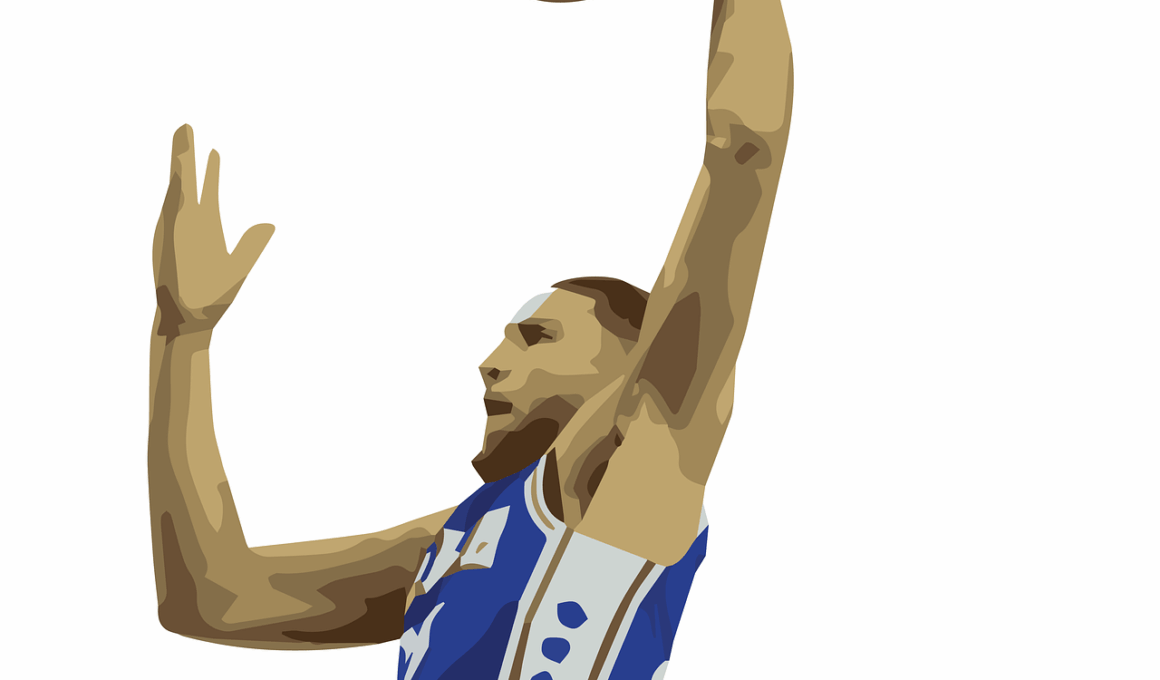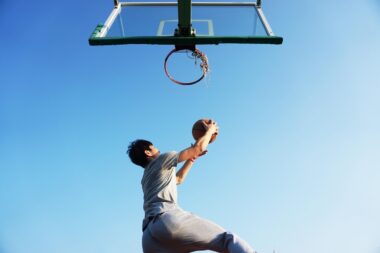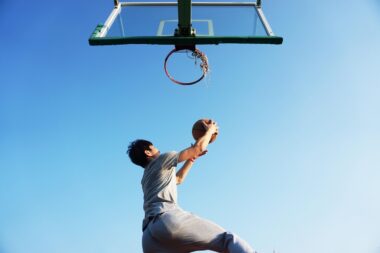Preventing Injuries with Proper Plyometric Techniques for Basketball Players
Plyometric exercises have gained prominence among basketball players for their significant benefits in enhancing performance. However, it is crucial to practice these techniques responsibly to reduce the risk of injury. Focus on proper form and mechanics while performing exercises such as box jumps or depth jumps. Start with a proper warm-up to maximize muscle activation and ensure your body is prepared for explosive movements. Gradually increase the intensity and complexity of the exercises as you build strength and confidence. Misalignment during plyometric activities may lead to undue stress on joints, making it important to engage a qualified coach or trainer. Prioritize quality over quantity during practice sessions, ensuring you execute each jump and landing with precision. Listening to your body is essential; any discomfort should not be ignored. Incorporating balance and stabilization drills into your routine can also aid in injury prevention. By focusing on core stability, you’ll enhance your overall athletic performance. Maintaining a sound fitness regimen will not only help in mastering plyometrics but also mitigate the risk associated with high-impact training.
Proper footwear plays a significant role in the execution of plyometric exercises for basketball players. Choosing shoes with adequate support, cushioning, and grip can enhance stability during explosive jumps and landings. When engaging in plyometric drills, ensure that the playing surface is suitable, as a hard or uneven surface increases the risk of injury. Soft surfaces may absorb impact and facilitate safe landings, while hard surfaces may place extra strain on the body. Additionally, rest and recovery are vital components of any training program to allow muscles time to rebuild and strengthen. Implementing appropriate recovery strategies will enable athletes to maintain higher training volumes without succumbing to fatigue or injury. Techniques such as foam rolling, ice baths, and stretching can effectively alleviate soreness and enhance mobility. Ensure that hydration and nutrition support muscle recovery and energy levels during practice. Consider incorporating flexibility exercises in your warm-up routine to improve overall range of motion. Athletic training should also involve focus on muscle imbalances; awareness of weaknesses can significantly decrease injury risk. Tailor your training and recovery strategies to suit your individual needs and performance goals.
The Importance of Technique in Plyometric Training
Technique is paramount in plyometric training, as improper execution can lead to injuries among players. Focusing on landing mechanics is crucial; players must learn to land softly and absorb impact using their legs and hips. A soft landing is essential to protect the knees and lower back. Neglecting landing techniques can result in joint injuries and long-term issues that may affect performance. As athletes progress through their training, they should emphasize control and stability when performing explosive movements. In addition, using visual cues or video analysis can be a powerful tool for understanding and improving technique. This level of awareness can reveal flaws in execution that could compromise safety and effectiveness. Regularly integrating plyometric drills into a strength and conditioning program enhances overall athleticism. The blend of strength and explosive power gained through proper plyometric training will greatly benefit basketball players on the court. Education around plyometric techniques will cultivate a safer training environment and promote longevity in an athlete’s career. Collaborating with trainers to refine skills will contribute immensely to improving performance and preventing injuries.
The body’s core acts as a stabilizing force during plyometric exercises, underscoring the necessity of core strength in basketball players. Engaging the core not only enhances performance but also provides the stability required to execute jumps accurately and land safely. Incorporating specific core-training exercises into your routine can improve overall performance during plyometric activities. Exercises such as planks, Russian twists, and medicine ball throws can reinforce this area. A solid core enables better alignment and controlled movement, reducing the risk of mishaps while executing explosive jumps. Adequate core conditioning also augments reaction times and agility on the court. Furthermore, integrating upper body strength training alongside core workouts is beneficial; they work in tandem to maintain balance and control. Tracking individual progress is essential; monitor which exercises yield success in augmenting performance and refining technique. Be mindful of rest intervals to prevent overexertion while developing these muscles. Players should also prioritize cross-training principles to improve overall fitness levels. Evaluating adaptability and responsiveness to training changes can drive performance; remember to tailor techniques individualized to what works best for your body.
Cross-Training Methods to Enhance Plyometric Performance
Cross-training methods contribute significantly to enhancing plyometric performance while reducing injury risk. Incorporating activities like swimming or cycling can promote cardiovascular health without putting undue stress on joints. These low-impact exercises assist in endurance training that’s vital for basketball players. Additionally, agility drills paired with plyometrics can develop quickness and coordination, essential qualities for on-court success. Exercises such as ladder drills or cone sprints offer complementary benefits and improve overall athletic performance. Emphasizing balance during cross-training routines allows athletes to strengthen stabilizing muscles crucial for controlled landings. Engaging in stretches and mobility work enhances flexibility, reducing tightness that may limit performance. It’s essential to maintain a well-rounded training program that includes strength, speed, and agility components. Allocate specific days for recovery and lighter work to give muscles time to heal. Focusing on overall conditioning will further reduce injuries while promoting longevity in your athletic career. Have regular assessments for progress and adjust goals accordingly. This strategic approach creates a formidable base for plyometric training, ensuring optimal gains and performance on the basketball court.
Recovery plays a crucial role in preventing injuries and enhancing overall performance for basketball players engaged in plyometric training. It’s essential to prioritize rest days in your workout schedule, allowing your body to rebuild and adapt to the intense impact of plyometric drills. This practice reduces muscle fatigue, mitigates stress on the joints, and helps maintain cardiovascular endurance. Incorporating active recovery sessions such as light swimming or yoga can promote blood flow and relaxation without adding strain to the body. In addition, consider the role of nutrition; a well-balanced diet rich in protein, healthy fats, and carbohydrates will support the muscle recovery process. Hydration cannot be overlooked, as it significantly impacts performance and recovery. Monitor electrolyte balance, especially in a high-intensity sport like basketball. Utilizing appropriate recovery modalities, like compression garments or massage therapy, can expedite recovery timelines and boost performance levels. Regularly schedule meetings with coaches or trainers to discuss your recovery strategies and adaptations needed based onhow your body feels. Creating an environment in which recovery is valued will underline its importance in healthy and effective plyometric training.
The Role of Stretching in Injury Prevention
Stretching is an integral aspect of injury prevention for basketball players engaging in plyometric exercises. Incorporating both dynamic and static stretching in your warm-up and cool-down routines can significantly enhance flexibility and reduce muscle tightness. Dynamic stretches help activate muscles prior to plyometric training, ensuring they are primed for explosive activities. Examples include leg swings, arm circles, and walking lunges, which promote blood flow and prepare the body for higher intensity movements. Post-training static stretching aids in recovery by improving blood circulation and elongating tight muscles. Consistently maintaining flexibility will support better landings and prevent injuries associated with high-impact exercises. Engage in a range of stretches targeting major muscle groups including calves, hamstrings, quadriceps, and hip flexors. As flexibility improves, athletes may notice enhanced range of motion, translating to better performance on the court. Establish a routine that emphasizes consistency; this ensures stretching becomes a habitual part of your training. Prioritize listening to your body during these practices, recognizing tightness when it arises. Developing a diligent approach to stretching can pave the way for greater success in plyometric training.
Plyometric training can yield phenomenal benefits for basketball players when approached with care and diligence. Emphasizing proper techniques and recovery strategies is essential in creating a sustainable and injury-free training regimen. Collaborate with experienced coaches or trainers to ensure you are executing exercises correctly. Consistent evaluation and feedback can significantly enhance performance. Monitor progress and tweak your training and recovery plan to match your evolving needs. When athletes prioritize proper form, balance, strength, and flexibility, they are setting the stage for long-term success. Remember, injury prevention is as fundamental as skill development in sport. Engaging in a comprehensive training program that encompasses all the discussed elements will yield optimal results. Ultimately, the goal is to walk the fine line between pushing limits and maintaining health. The combination of plyometric training paired with strength, conditioning, and recovery strategies creates a well-rounded athlete, ready to excel on the court. Focus on cultivating a culture of safety and diligence in practice sessions; this focus will ensure that players not only perform well but do so for years to come.





